My Dog Ate a Q-Tip [What to Do!?]
Dogs are amazing animals that we all love. Who wouldn’t want the best for their furry friends?
However, dogs eat anything – even Q-tips, which can pose serious health risks. Many owners panic in disbelief, thinking, “My dog ate a Qtip! What should I do?!”
It is essential to know what steps to take to ensure your dog stays in good health.
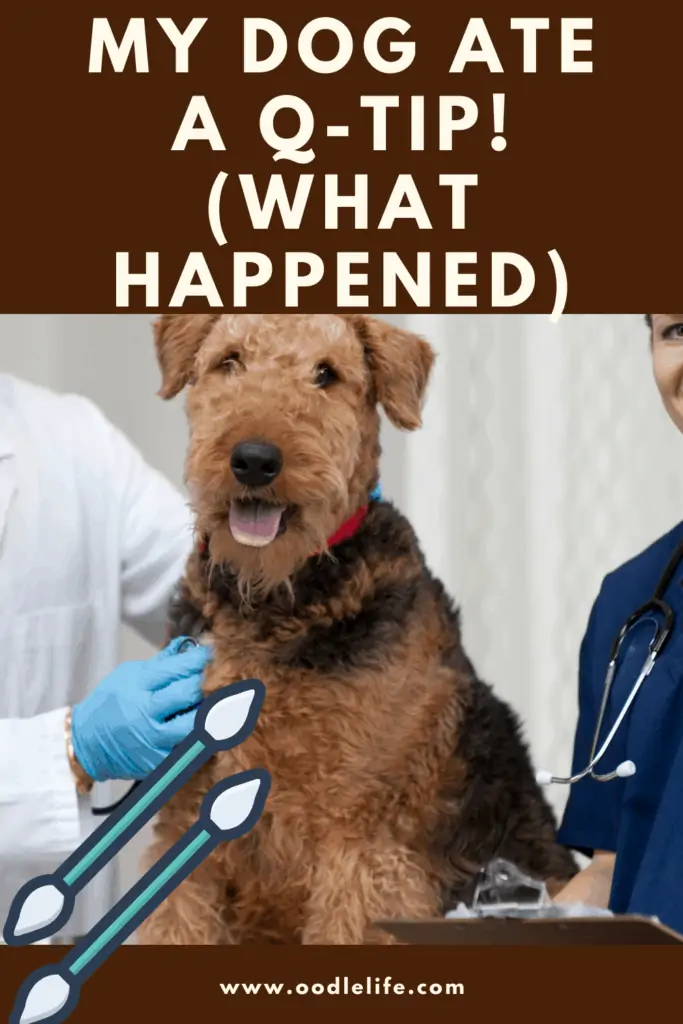
If this has ever happened to your dog, or you’re worried it might happen, we’ve got you covered! We’ll go over everything you need to know about helping your dog through this challenging time and preventing this from happening again.
Steps to Take When Your Dog Eats a Q-Tip
It’s an unfortunate situation when your dog eats a Q-tip. Sometimes, you can catch them chewing on it before digesting it. Still, in the event they do swallow it, follow these steps:
- Do not induce vomiting, as it can puncture the throat or block the esophagus.
- Observe the dog’s behavior:
- Is the dog lethargic or experiencing appetite loss? Feed the dog a high fiber diet to regulate the digestive system. Encase the Q-tip by combining bland food such as boiled meat and white rice as it goes through the intestine.
- If the dog seems to be in pain, call the vet right away. Medical attention and treatment may be necessary for difficult situations.
- If there is no change in behavior, continue to observe for 2-3 more days until the Q-tip passes through the digestive system. Keep the first two steps in mind during this time in case the dog’s behavior changes.
Depending on your pet, some adjustments may have to occur.
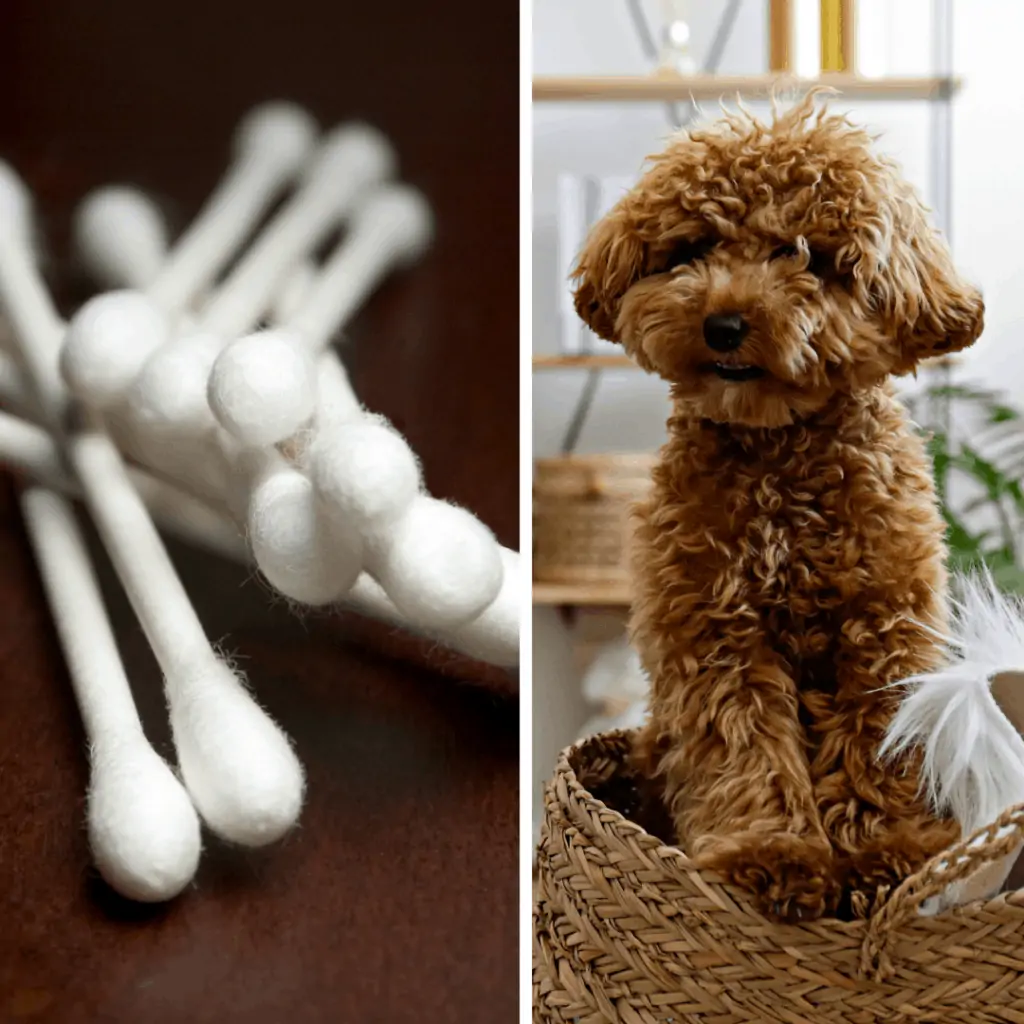
Symptoms That May Occur after Eating a Q-Tip
Common symptoms that may happen after your dog eats a Q-tip include:
Loss of appetite: Expected after the dog eats a Q-tip because of digestion
Feeling lethargic: Digestive issues tend to make the dog feel tired
Diarrhea: Monitor for blood, as plastic applicators or non-biodegradable swabs may obstruct the intestine
Vomiting: Observe for choking if the applicator was plastic or rigid material
Abdominal pain: Call the vet immediately
Any pain is a severe cause of concern, as it may signal a blockage in thedigestive tract.
Does the Size of My Dog Matter?
Yes! The size of your dog does matter if they eat a Q-tip.
A German Shepherd is much different from a Chihuahua because of the size of their digestive tracts.
If you were to call the vet, the first question they will ask is the dog’s size. From there, they assess if the dog needs immediate attention or not. Other factors include the type of Q-tip and what was on it.
Overall, more complications may occur if your dog is a smaller breed.
Dangers of Your Dog Eating a Q-Tip
Dogs eat strange things off the floor all the time. It helps to know what you’re dealing with, as Q-tips are more than just a regular cotton swab. For instance, knowing the different types of Q-tips may help you decide whether to take the dog to the vet.
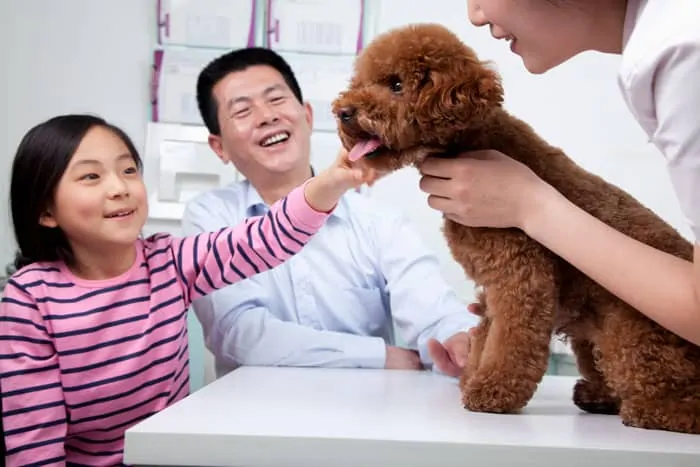
Components of a Q-Tip
A Q-tip, or any other cotton swab, has two parts: an applicator and cotton on both sides.
The brand “Q-tips” contains 100% pure cotton that is non-sterile, made with all-natural materials. The cotton swabs are biodegradable. If your dog ate one of those Q-tips, there is less chance you’ll need to call the vet since it can pass through the digestive system. The same goes for a cotton ball – but there is always a chance of blocked poop due to the foreign object in the intestinal tract or stomach!
Other cotton swab brands might have tips with chemicals on them to keep them sterile. This may or may not be harmful to the dog, but anything added to the applicator and cotton tips could pose a severe risk.
The applicator is the main issue, as many brands have plastic between the cotton swabs, making it harder to digest. The best-case scenario is a biodegradable cardboard applicator for easy digestion.
Different Types of Q-Tips
We will briefly go over the different types of Q-tips to assess if they are harmful to your dog or not.
The most common types of Q-tips include:
Cotton tips: Easiest to digest, as it is soft, absorbent, and the safest material besides cardboard or paper applicators. Although, cotton tip swabs with plastic applicators make the Q-tip dangerous, especially for a small breed.
Rayon tips: These swabs are for specimen collection and tend to have long applicators, putting your dog at risk for complications. The tips are also synthetic and harder to break down. If your dog appears to be in pain after eating a rayon swab, call the vet.
Polyester tips: Swabs made from polymer tend to have long, plastic applicators. The polyester tips are not digestible. If your dog ate this Q-tip, seek veterinary attention immediately.
Foam tips: Polyethylene foam or any other kind of foam is thick and not digestible. Usually, one side of the plastic applicator has the foam. However, this is a tough swab for medicinal uses that immediately needs medical attention if your dog ate a foam tip.
Flocked tips: These swabs tend to be made from thick, polyester material with long applicators, commonly used for nasal application. Call the vet immediately if your dog ate a flocked swab.
In all, medical-grade swabs with sterile, chemically-bound materials tend to be harder to digest. Long applicators pose the biggest threat, as they’re plastic, hard to break down, and disastrous for the intestine.
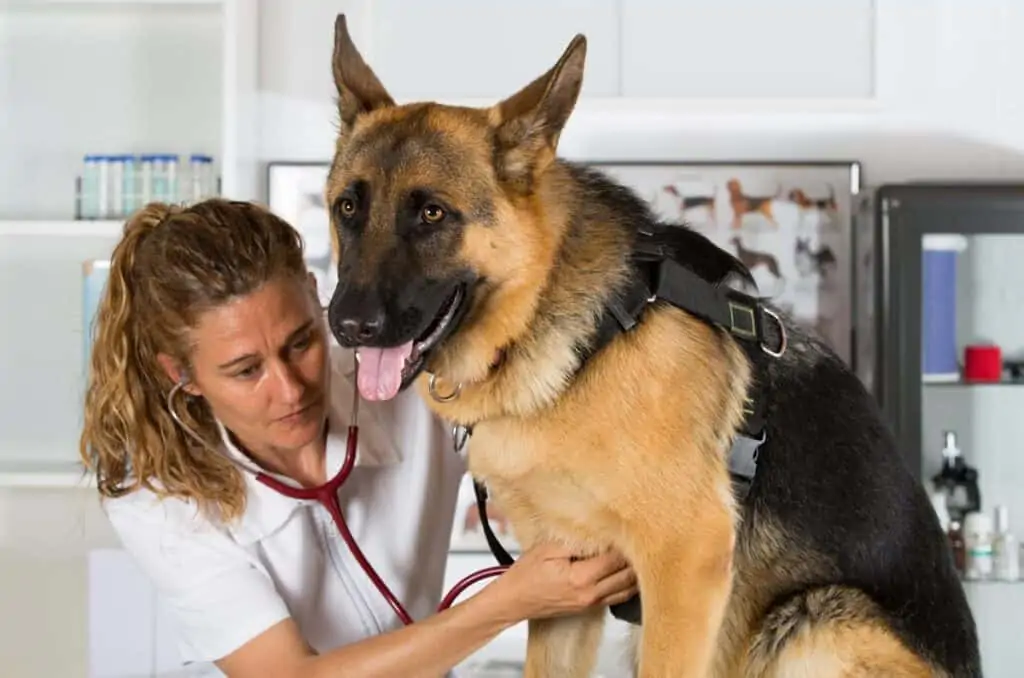
What Was on the Q-Tip?
While paper-based cotton swabs are the best scenario, chemicals on the swab can cause concern.
Some substances that may pose a risk are:
Glue: Instant or gorilla glue may damage the intestines, although the dog must eat large amounts to be life-threatening.
Nail polish or remover: Small concentrations of nail polish may not be a serious concern. Observe if your dog vomits or an upset stomach. Same with nail polish remover, as small amounts may not be
Household chemicals: Substances such as bleach or hydrogen peroxide may induce vomiting and irritant the dog’s stomach. However, small amounts should not be a severe risk to your dog.
This chemical can cause stomach or digestive problems. Fortunately, the dog must eat large amounts to feel serious effects. Some worse case scenarios may include vomiting, lethargy, or bowel problems.
How to Help Your Dog Digest a Q-Tip
Canned pumpkin is the best food your dog can consume to aid the digestive tract. The soluble fiber adds weight to the stool and lowers the gut’s pH level, stimulating good bacteria. However, it must be pure and not a pumpkin pie mix that may containxylitol, a danger to dogs.
Additionally, white rice with boiled meat, preferably chicken, can encapsulate the Q-tip and make it easier to expel. Beef or any other red meat takes longer to digest, prolonging the problem.
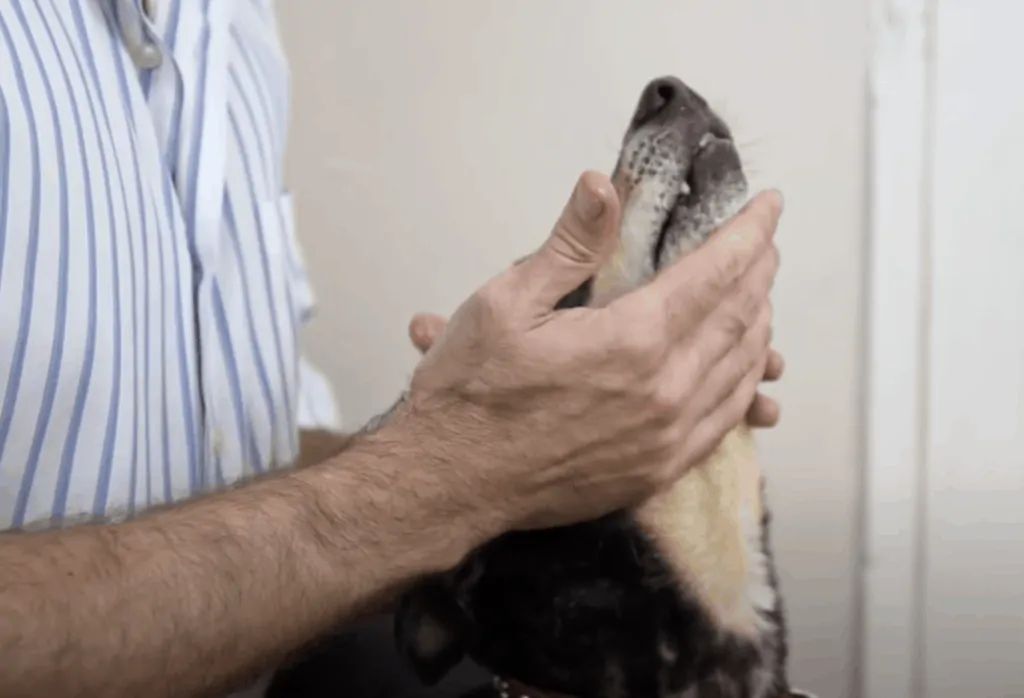
Treating Your Dog after Eating a Q-Tip
The steps to treat your dog after eating a Q-tip is similar to the initial steps previously mentioned, such as:
- Do not induce vomiting. Only a vet should, as it must be medically supervised. Also, choking may occur if the applicator is plastic. If you would like, you may call the vet for advice or ASPCA if you cannot reach a vet. Vomiting can dehydrate the puppy and result in the need for iv fluids.
- Monitor the dog’s behavior for the next 2 to 3 days. During this phase, feed fibrous dog food such as canned pumpkin. Soft white rice with boiled meat helps keep the bowels moving as well. Keep portions small throughout the day.
- Return to their regular food schedule with their favorite treats only after the dog defecates the Q-tip.
- Continue to monitor the dog’s behavior. If the dog keeps quiet, that’s okay, but if the dog becomes irritated or exhibits strange behavior, call the vet.
Overall, this process should not last more than five days. The key is to observe the dog as closely as possible while feeding them soluble fiber to move the bowels.
How to Prevent Your Dog from Eating Q-Tips
To prevent going through the mixed emotions of “My dog ate a Q-tip!” again, prevention is critical.
Some advice to prevent your dog from eating Q-tips include:
Chew Toys: Get as many chew toys as possible to prevent your dog from finding any Q-tips to eat on the floor.
Training: You can train your dog – or invest in obedience classes – to specifically teach your dog to not eat random items off the floor.
Dog proof trash can: Garbage cans with a two-lock mechanism can be beneficial to keep dogs from rummaging the trash for Q-tips or paper towel. Dogs have a nose for it!
Paper-based Q-tips: If for some reason the dog eats a Q-tip again, swabs with cardboard and 100% cotton are the easiest to digest
Final Thoughts
Of course, we never want to be in the position where we end up calling the vet to say “My dog ate a Q-tip!” Still, these things happen, dogs will eat non food items, whether it isa plastic bag or Q-Tip. It’s best to know what to do in these situations. With the above tips, you’ll know what to watch for and what some warning signs are.
Remember, if your dog swallows a plastic applicator, experiences pain, or exhibits abnormal behavior, call the veterinarian as soon as possible. As a pet owner it is worth the hassle 100% of the time to call for expert advice.